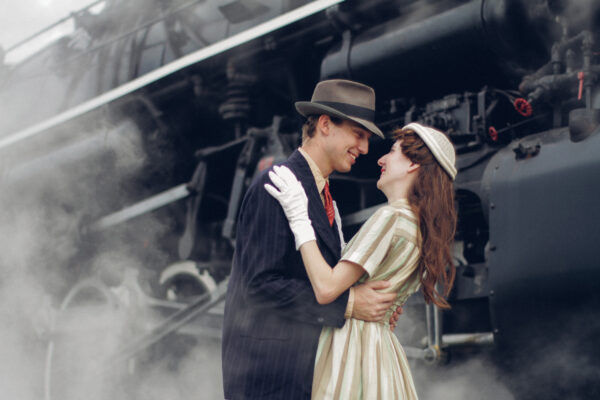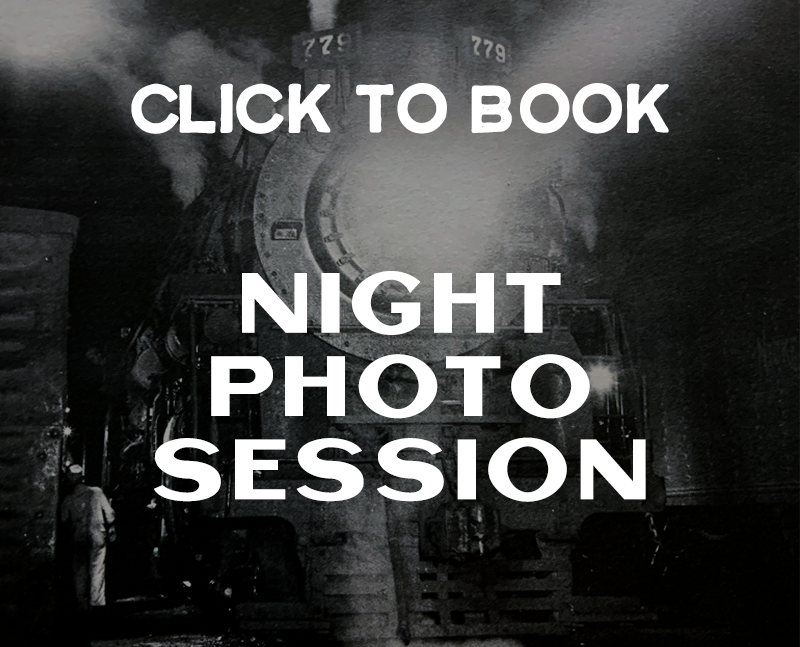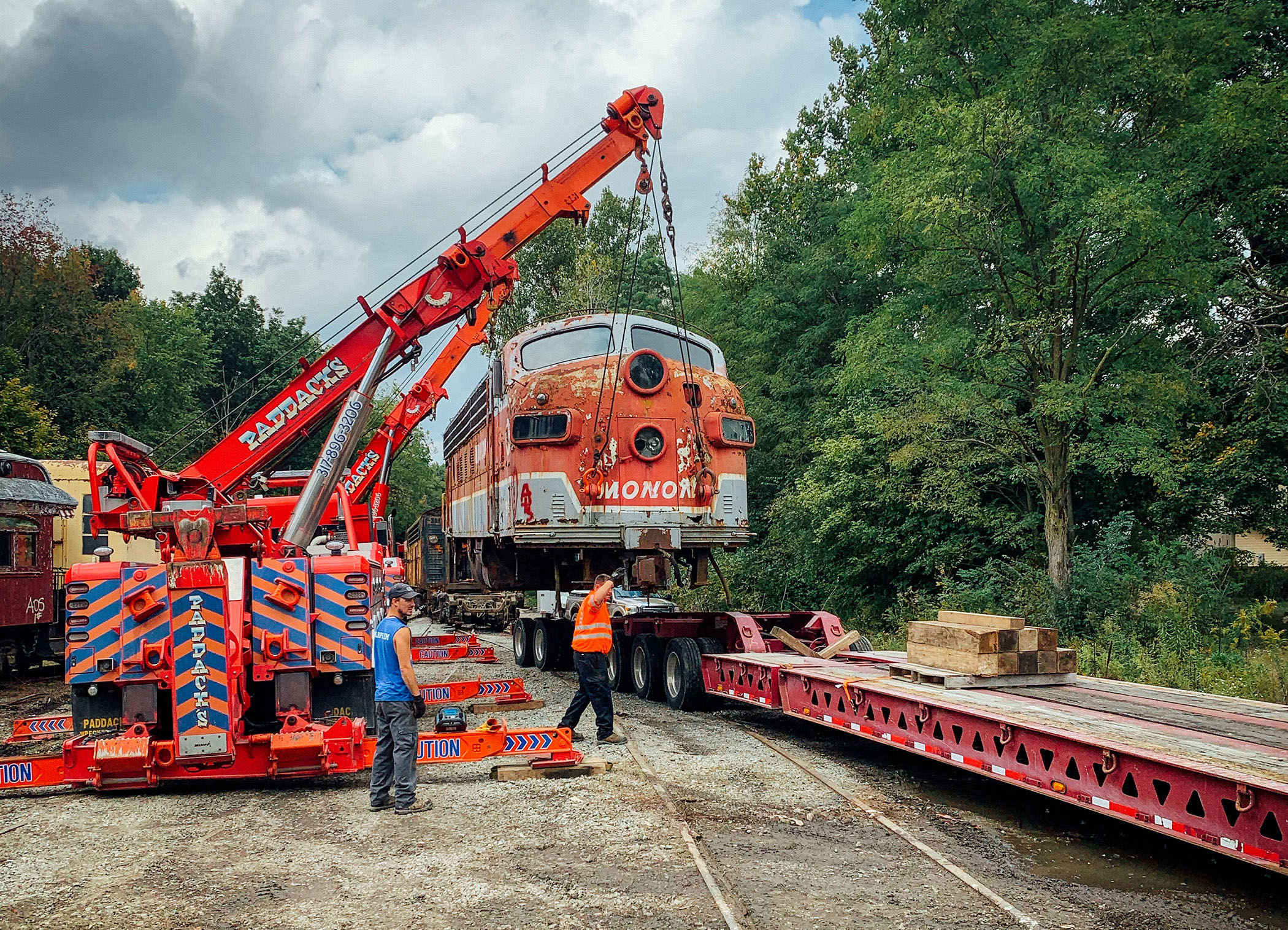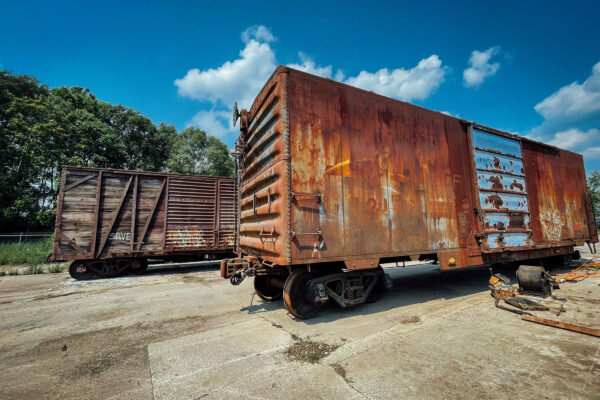
ANGOLA, INDIANA – The Fort Wayne Railroad Historical Society, Inc. and the Indiana Northeastern Railroad Company have announced The Indiana Rail Experience, a historic partnership that will contribute to the tourism economy and the quality of life in Northeast Indiana. Tickets will be available at indianarailexperience.org.
Beginning in 2022, the Fort Wayne non-profit will operate a series of passenger train trips, educational programs, and special events over the Indiana Northeastern, a 100-mile railroad line that connects Indiana, Ohio, and Michigan.
Events will include a wide array of excursions with Nickel Plate Road no. 765, a 1940s-era steam locomotive, which has become an international cultural attraction since being restored to operating condition in 1979. In addition to the 765, other historic locomotives and classic railroad passenger cars will provide unique offerings for children, families, and adults between July and October. A complete schedule and tickets will be available later in May and June. To get notified, click here. For sponsorship inquiries, click here.
“Our railroad has helped drive the economy of this region since it was started to support local farmers,” explained Gale Shultz, President of the Indiana Northeastern. “We’re hoping to not only shine a spotlight on our community with the popularity of the 765, but let the world know that the region and the railroad are open for business.”

The Indiana Northeastern is an industrious short line railroad serving Northeast Indiana, Southern Michigan, and Northwest Ohio.
“This multi-year agreement will allow us to offer experiences to our friends and neighbors like never before,” said Kelly Lynch, Vice President of the Fort Wayne Railroad. “We couldn’t be more fortunate to work with a local, family-owned organization like the Indiana Northeastern. This partnership will bring joy to thousands of residents and visitors.”
In addition, events will be hosted in cooperation with the Little River Railroad, Norfolk & Western Business Car No. 300 Preservation Society, Steuben County Tourism Bureau, and the City of Angola. Sponsors include Berne Apparel, JICI Construction, The John H. Emery Rail Heritage Trust, McRail Insurance, and Trine University.
“We are thrilled that the Indiana Northeastern is boosting our recreation industry. Not only does this give our population more to do in the summer months, but the potential to expand these events into the off-season will be significant for our area,” said June Julien, Executive Director of Steuben County Tourism Bureau.

Formally incorporated 30 years ago in 1992, the Indiana Northeastern has revitalized the former Wabash and New York Central Railroad lines which had all but been abandoned by the 1990s. The short-line railroad success story now sees over 5,000 freight carloads a year, serves 25 industrial and agricultural industries in three states and supports over 500 jobs. The Indiana Northeastern maintains offices and a locomotive repair facility in South Milford and Hudson, Indiana, respectively.
With roots deep in state history and cultural heritage tourism, rail tourism in Indiana continues to be a burgeoning industry. The recently inaugurated Nickel Plate Express in Noblesville hosted 25,000 riders, and the events of the French Lick Scenic Railway in southern Indiana welcomed over 70,000 riders last year.
“In 2020, Indiana had an estimated 67 million visitors,” said Lt. Gov. Suzanne Crouch. “Development is key to the Leisure and Travel-related industry and its growth, and this development in Northeast Indiana will be a great addition to visitor attraction and to the quality of life.”
“Our events routinely sell out and are in significant demand in Northeast Indiana. Our studies have shown that a more permanent railroad attraction in this region could welcome over 120,000 visitors on an annual basis,” added Lynch.
For 50 years, the Fort Wayne Railroad Historical Society has offered remarkable and inspiring experiences through the preservation, restoration, and operation of historic railroad equipment and artifacts significant to Northeast Indiana. An all-volunteer, award-winning, and safety-driven non-profit organization, it has operated Nickel Plate Road no. 765 for over 100,000 miles in public exhibition and passenger train excursion service and routinely welcomes visitors from all 50 states and half a dozen countries. As a part of its role in the rail tourism industry, Fort Wayne continues to restore and exhibit other historic steam and diesel locomotives, freight cars, and passenger cars from the Golden Age of Railroading, all of which are used to celebrate and preserve the area’s cultural and industrial heritage. Fort Wayne’s operations are funded by ticket sales, memberships, donations, grants, and sponsorships.


























